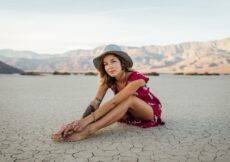May 26th, 2022
Environmental Working Group came out with its annual Guide to Sunscreens earlier this month. As it does every year, EWG analyzes sunscreens and makes recommendations based on their effectiveness and the safety of the ingredients used. But perhaps the best advice for consumers to hear is that sunscreens alone aren’t enough protection to prevent skin damage and reduce the risk of skin cancer. We need to reduce sun exposure:
The best defense against getting too much harmful ultraviolet radiation is a combination of protective clothing, shade and good timing. Our checklist:
Don’t get burned. Red, sore, blistered or peeling skin means far too much sun – and raises your skin cancer risk.
Cover up. Shirts, hats, shorts and pants provide the best protection from UV rays – and they don’t coat your skin with goop.
Find shade – or make it. Picnic under a tree, read beneath an umbrella or take a canopy to the beach. Keep infants in the shade – they are still developing the tanning pigments, known as melanin, that protect skin.
Plan around the sun. Go outdoors in early morning or late afternoon, when the sun is lower. UV radiation peaks at midday.
Sunglasses aren’t just a fashion accessory. Good shades protect your eyes from UV radiation that may cause cataracts.
Nancy Redd and Shannon Palus suggest “the best sunscreen is the one you’ll apply liberally and often, so it should be affordable but still feel good.” They advise consumers to look for these features before buying:
• SPF 30+. The American Academy of Dermatology suggests choosing sunscreens that advertise a sun protection factor of 30 or more.
• Broad spectrum. Choose a sunscreen that protects against both UVA and UVB radiation.
• Water resistance. Even if you don’t plan to sweat or swim, water-resistant sunscreens should have better staying power on skin.
• Price per ounce. To be well protected, you need to apply sunscreen liberally and reapply it often.
Kathleen Doheny says the news on sunscreens isn’t all sunny:
About 75% of more than 1,850 sunscreen products evaluated offer inferior sun protection or have worrisome ingredients[…]
Overall, the Environmental Working Group found, about 1 in 4 sunscreens, or about 500 products, met their standards for providing adequate sun protection and avoiding ingredients linked to known health harms. Products meant for babies and children did slightly better, with about 1 in 3 meeting the standards.
EWG offers these warnings to consumers:
Don’t fall for high SPF labels. Pick a sunscreen with an SPF between 15 and 50+. Higher SPF numbers can tempt you to stay in the sun too long – and even if you don’t burn, your skin may get damaged. Choose a product based on your own skin coloration, and if you are near water or at high elevation, consider a more protective product. Reapply often.
Avoid sunscreen with vitamin A. Government data show that tumors and lesions develop sooner on skin coated with creams laced with vitamin A, also called retinyl palmitate or retinol. Avoid any skin or lip product whose label includes retinyl palmitate, retinol or vitamin A.
Avoid oxybenzone, an ingredient that may behave like estrogen. Oxybenzone penetrates the skin readily and can disrupt the hormone system. Look for products with zinc oxide, 3 percent avobenzone or Mexoryl SX. They protect skin from harmful UVA radiation.
Don’t combine sunscreen with repellent. If you need bug repellent, buy it separately and apply it first.
Don’t spray. Sprays cloud the air with tiny particles that may not be safe to breathe.
Reapply cream often. Sunscreen chemicals sometimes degrade in the sun, wash off or rub off on towels and clothing.
Men ignore sun safety at their peril. In 2021, the American Cancer Society estimates about twice as many American men are expected to die from melanoma as women. Surveys show that 48 percent of men report routine sun avoidance, compared to 68 percent of women.
The best form of sun protection is a shirt and hat, says EWG. Additional precautions are age-dependent:
Infants
Infants under 6 months should be kept out of direct sun as much as possible. Their skin is not yet protected by melanin. When you take your baby outside:
• Cover them up with protective clothing that’s tightly woven but loose fitting, and a sun hat.
• Make shade. Use the stroller’s canopy or hood. If you can’t sit in a shady spot, use an umbrella.
• Avoid midday sun. Take walks in the early morning or late afternoon.
• Follow product warnings for sunscreens on infants younger than 6 months old. Most manufacturers advise against using sunscreens on infants, or advise parents and caregivers to consult a doctor first. The American Academy of Pediatrics says that small amounts of sunscreen can be used on infants to avoid sunburns when it isn’t possible to find shade.
Toddlers and children
Sunscreens are an essential part of a day in the sun. But young children’s skin is especially sensitive to chemical allergens, as well as the sun’s UV rays.
• Test sunscreen by applying a small amount on the inside of your child’s wrist the day before you plan to use it. If an irritation or rash develops, try another product. Ask your child’s doctor to suggest a product less likely to irritate your child’s skin.
• Slop on sunscreen and reapply it often, especially if your child is playing in the water or sweating a lot.
Teens
Teenagers who covet bronzed skin are likely to sunbathe or visit tanning salons, both of which are a bad idea. Researchers believe that increasing UV exposure may have caused the marked increase in melanoma incidence noted among women born after 1965. Tanning salons expose the skin to as much as 15 times more UV radiation than the sun, and tanning bed use has been directly linked to increased rates of melanoma in women.
Tan does not mean healthy. Be a good role model for your teens – let them see that you protect yourself from the sun.
Read more from the Environmental Working Group’s 16th annual Guide to Sunscreens and find the most effective and safest sun protection for your kids here.
Read more about avoiding sunburn and preventing skin damage from the sun on The PediaBlog here.




































